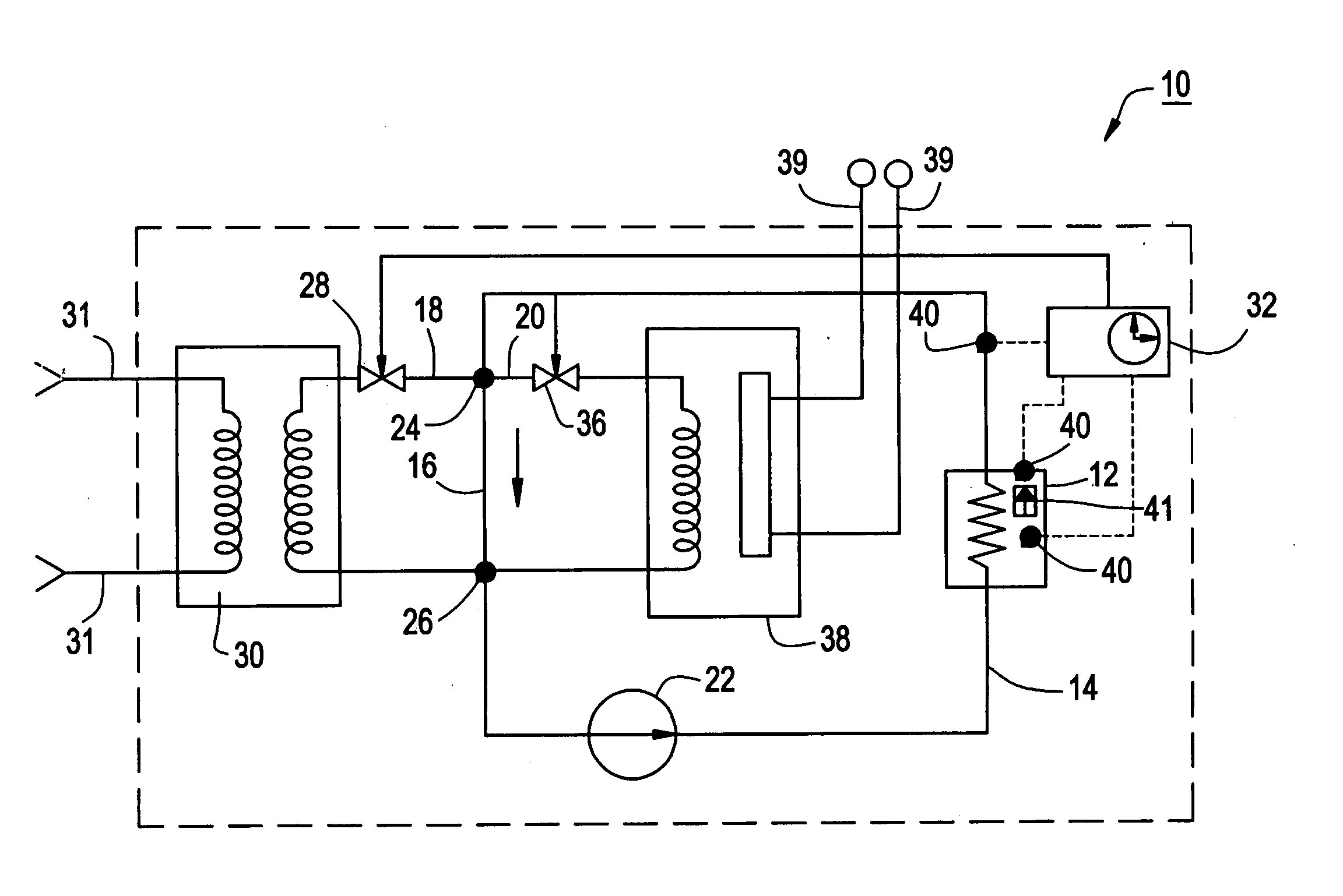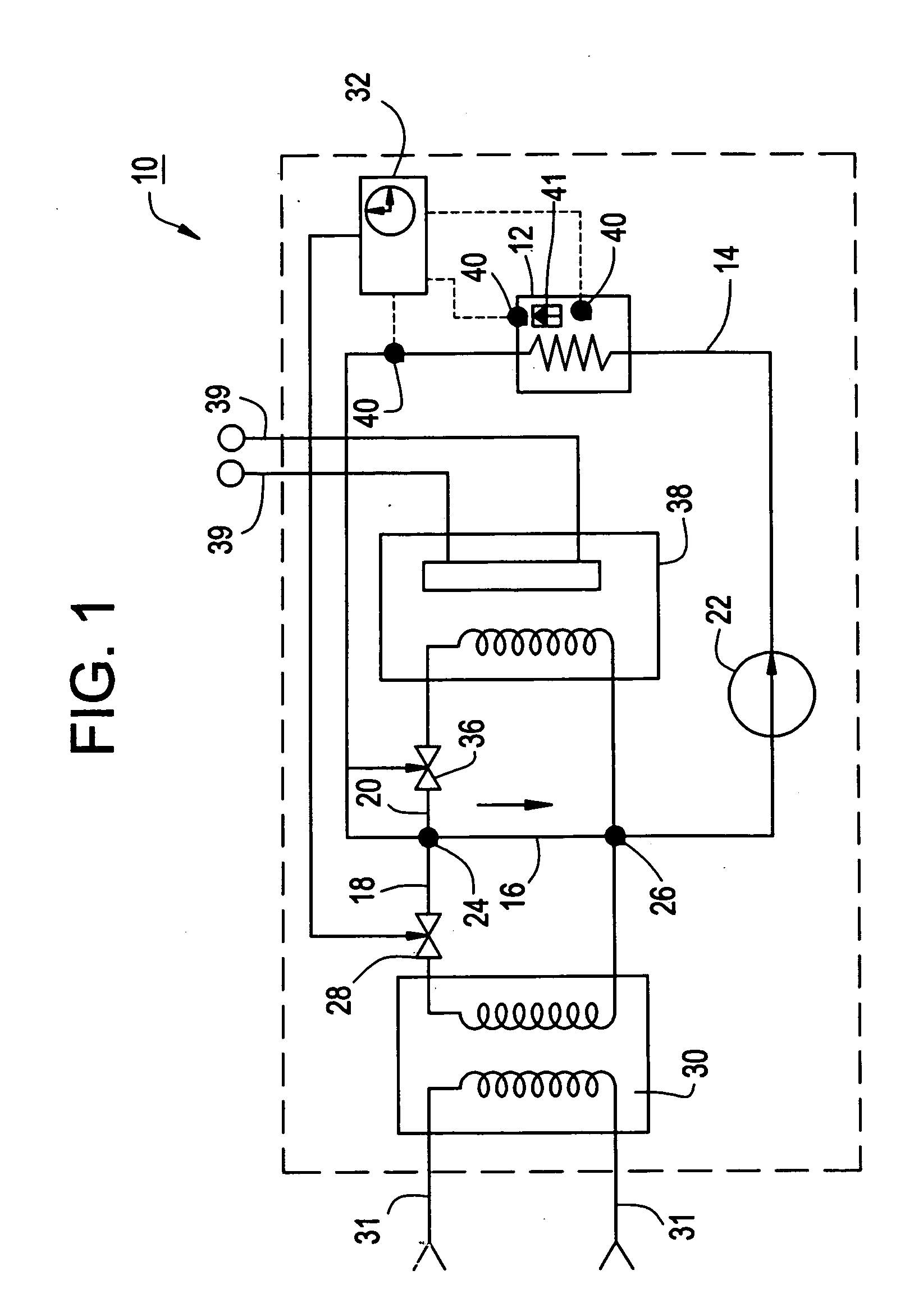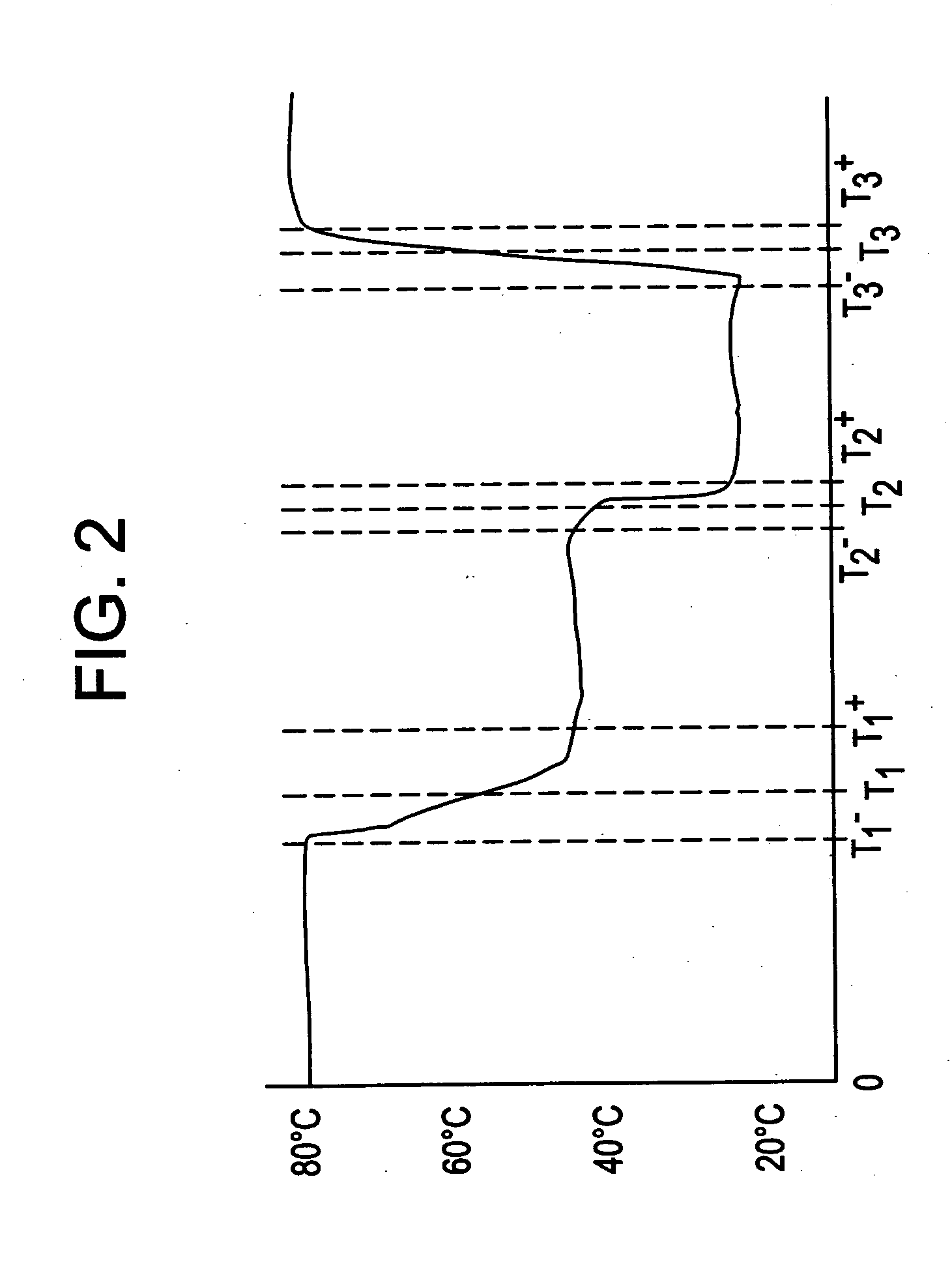Semiconductor processing temperature control
a technology of semiconductors and temperature control, applied in the field of semiconductor processing temperature control, can solve the problems of increasing the need for accurate temperature control, high floor space cost, and high building and operation costs, and achieves the effects of reducing valve switching, improving reliability, and low thermal shock
- Summary
- Abstract
- Description
- Claims
- Application Information
AI Technical Summary
Benefits of technology
Problems solved by technology
Method used
Image
Examples
Embodiment Construction
[0025] Reference will now be made in detail to an illustrated embodiment of the invention, the example of which is shown in the accompanying drawings.
[0026]FIG. 1 illustrates a semiconductor process temperature control system 10 that is in accord with the principles of the present invention. The semiconductor process temperature control system 10 both heats and cools a target 12, as required, using a temperature control fluid in a re-circulation loop 14. The re-circulation loop 14 includes a through passage 16, a cooling passage 18, and a heating passage 20. The temperature control fluid is pumped through the re-circulation loop 14 by a pump 22.
[0027] Still referring to FIG. 1, the through passage 16, the cooling passage 18, and the heating passage 20 are in parallel. They meet at a first branch 24 and at a second branch 26. The through passage 16 transports some of the temperature control fluid directly from the first branch 24 to the second branch 26. The cooling passage 18 incl...
PUM
 Login to View More
Login to View More Abstract
Description
Claims
Application Information
 Login to View More
Login to View More - R&D
- Intellectual Property
- Life Sciences
- Materials
- Tech Scout
- Unparalleled Data Quality
- Higher Quality Content
- 60% Fewer Hallucinations
Browse by: Latest US Patents, China's latest patents, Technical Efficacy Thesaurus, Application Domain, Technology Topic, Popular Technical Reports.
© 2025 PatSnap. All rights reserved.Legal|Privacy policy|Modern Slavery Act Transparency Statement|Sitemap|About US| Contact US: help@patsnap.com



